SAMURAI SWORD 3 - JAPANESE WWII


The following pictures illustrate a fine example of an older Katana blade mounted in the traditional
WWII fashion. The blade on this sword is in pristine condition and has an overall length of approximately
28 inches.
The handle of the sword has been removed in the picture below.

the picture on the left is the pommel (Kabutogane) of the sword. Notice the detail of the decorations
adorning the sword hanger.
The picture to the right depicts the (Menuki) which is a collection of three cherry blossom. These blossoms
are standard symbols of the Japanese army of WWII.
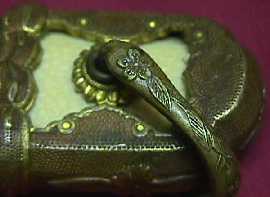
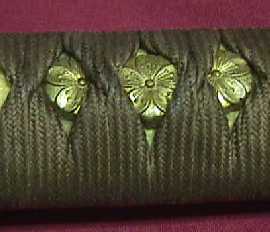
The pictures below are a clear illustration of how the sword was secured to the scabbard. The tip of the locking
mechanism tends to break when people force the sword out. Notice the fine workmanship and
and detail of the sword fittings.
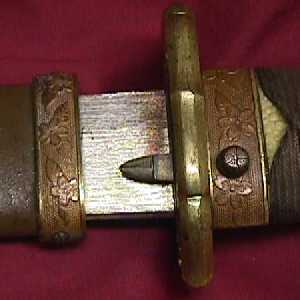
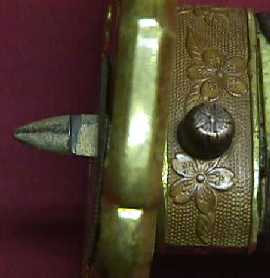
This is a top view of the scabbard. The whole to the left of the main opening is where the locking tab connected to
the body of the scabbard. The inside of the scabbard is lined with wood to provide a better fit and to protect the blade
of the sword.
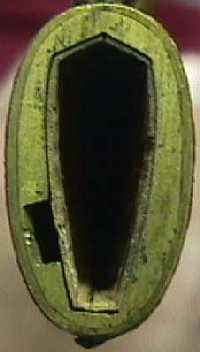
The tang of this sword is signed on both sides. These signatures often contained information such as dates, family
name, school name and the name of the maker.
The name of the maker/school is important because some of them are highly desirable. However, there is a problem in
determining the authenticity of the signature because in many cases they have been forged. Some of these forgeries
back to the 1700's. Some experts believe that up to 80% of the signatures may not be authentic.
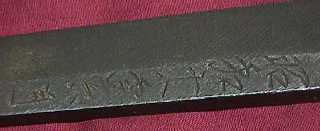
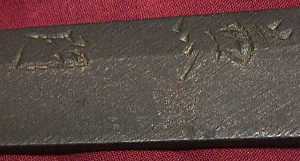
A closeup picture of the hand guard or Tsuba follows. This piece is painted gold and has a cherry blossom in
each corner. The guard has an opening to allow for the locking mechanism to go through. Also notice the washers on top of the guard.
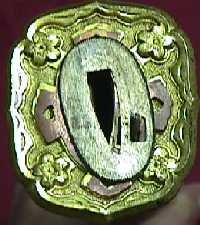
The washers are removed from the hand guard.

A closeup of the Tsuba and the washers reveals the number 40. Each piece is matching which helps
ensure the authenticity of the period. The washers are called Seppa.
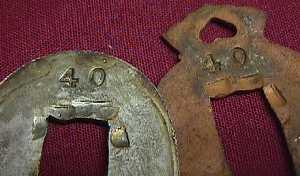
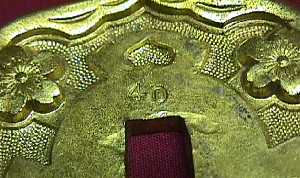
The picture to the left of the screen provides a close look at the scabbard band. this piece is known as the Semegane.
The picture to the right depicts the suspension mount. Again, this mount is typical of those produced for the Japanese
Army of WWII. The name of the suspension mount is Shin-Gunto.
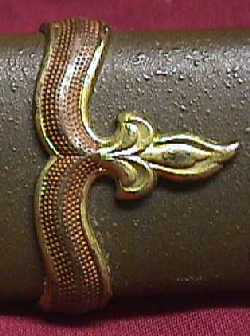
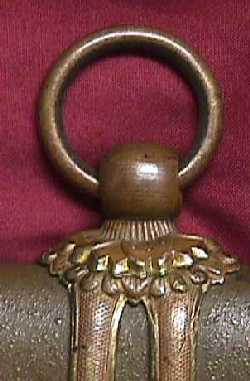
This picture shows the front of the pommel. note the cherry blossom witht leaves on top and bottom. This
picture also provides a different view of the sword hanger.
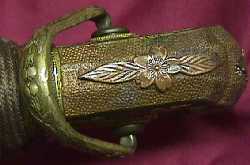
This Samurai Sword may be currently reproduced.
It is becoming more difficult to be able to tell the fake ones from the real ones because
the quality of the reproductions is improving. The collector must become familiarized with
the construction style and materials employed in the manufacturing of this item.
Attention to the details is critical in order to be able to determine the authenticity of
the collectible.
If you have an interest is seeing other Japanese Samurai swords, you can do so by going to our
Japanese Samurai Swords Price Guide
identification guide. Where we cover Samurai swords from all periods.
PRICING GUIDE
The following is an estimated value. Provided courtesy of MilitaryItems.com
|
This page has been updated. To see the latest version which includes price information click
HERE
|
| 




